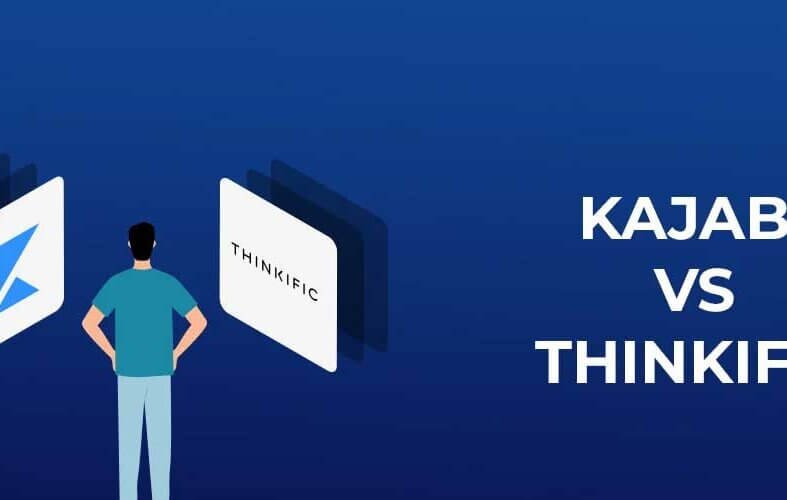7 Major Differences Between Kajabi and Thinkific
Choosing the right online learning platform is crucial for entrepreneurs, educational institutions, and content creators looking to share knowledge. When it comes to online course creation and management, two top players in the market are Kajabi and Thinkific. While they both offer powerful features and tools to launch successful online courses, they have some fundamental differences that can significantly impact your e-learning journey.
In this post, we will explore Thinkific vs. Kajabi, helping you decide which platform aligns best with your specific needs.
1. User Interface and Design Flexibility:
When it comes to user interface (UI) and design customization options, Kajabi tends to stand out. With its visually appealing templates and drag-and-drop builder, creating aesthetically pleasing course content becomes a breeze. On the other hand, while Thinkific provides a clean UI with a moderate level of customization options for branding your courses, it may not offer as much flexibility as Kajabi when it comes to fine-tuning the overall design.
2. Pricing Structure:
Pricing is a critical factor when choosing an online learning platform. Both Kajabi and Thinkific offer various pricing plans based on your needs; however, they differ in their payment structures. Kajabi operates on a tiered pricing system where different features are unlocked as you upgrade your plan. Meanwhile, Thinkific offers more flexible options with its à la carte pricing model that allows you to select the features you need without committing to all-in-one packages.
3. Course Development Features:
When comparing course development features between Kajabi and Thinkific, we see some notable distinctions in terms of offerings. Kajabi seamlessly integrates multiple content types, such as videos, quizzes, assessments, file downloads, etc., all within a single course. This can greatly enhance the learning experience for students. While Thinkific provides similar basic content elements, it may not offer the same advanced functionality as Kajabi.
4. Marketing and Sales Capabilities:
Effective marketing and sales automation tools are essential for success in the online course industry. Kajabi comes with built-in features such as email marketing, funnel creation, affiliate program management, and marketing pipelines. On the other hand, Thinkific offers integrations with popular third-party marketing tools like Mailchimp and ConvertKit but lacks some of the built-in functionalities found in Kajabi.
5. Community and Engagement Features:
Creating an engaging learning environment is crucial to fostering student satisfaction and retention. Here’s where Thinkific takes the lead with its integrated community feature. It allows instructors to set up discussion forums, manage student interactions, and build an active community around their courses. While Kajabi does not offer a built-in community tool, it provides integration options with external platforms like Facebook Groups to foster engagement.
6. Customer Support:
Assistance from customer support is vital when navigating through the complexities of an online learning platform. Kajabi and Thinkific offer customer support but differ in their accessibility options and response times. While Kajabi offers 24/7 live chat support for all plans and a comprehensive knowledge base, Thinkific provides a more limited live chat feature available only on higher-tier plans.
7. Data Analytics and Insights:
Data analytics plays a crucial role in insightfully analyzing your course performance. When it comes to data reporting capabilities, Kajabi provides real-time analytics that reveal detailed metrics on student progress, revenue generation, conversion rates, engagement levels, and more—empowering instructors to gauge the effectiveness of their courses accurately. In comparison, while Thinkific offers basic analytics such as enrollment numbers and completion rates, it may lack some of the in-depth metrics provided by Kajabi.
Conclusion:
As you embark on the journey of online course creation and management, choosing the right platform between Kajabi and Thinkific is essential. Understanding the major differences between these platforms will help you determine which aligns best with your specific goals, requirements, and budget. Whether it’s the design flexibility, pricing structure, course development features, marketing capabilities, community tools, customer support, or data analytics—weighing these seven factors will ensure you make an informed decision that sets you up for success in the world of online teaching.








